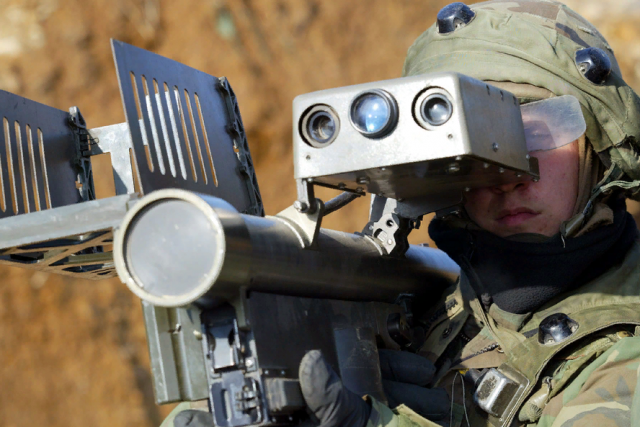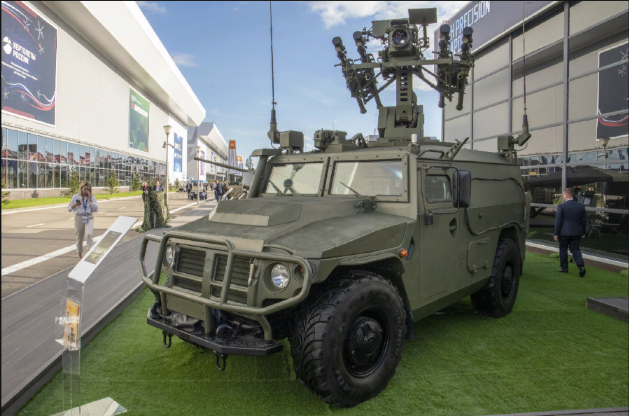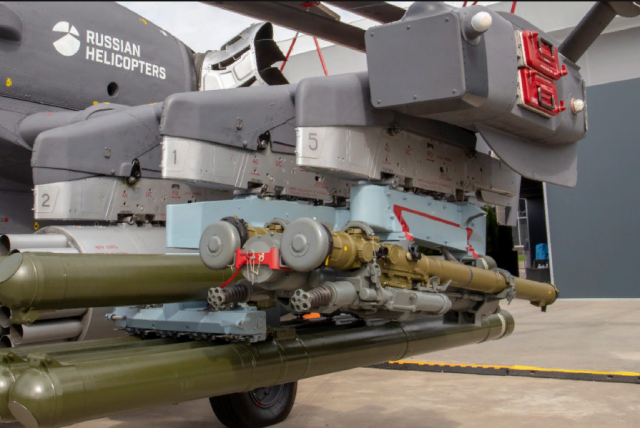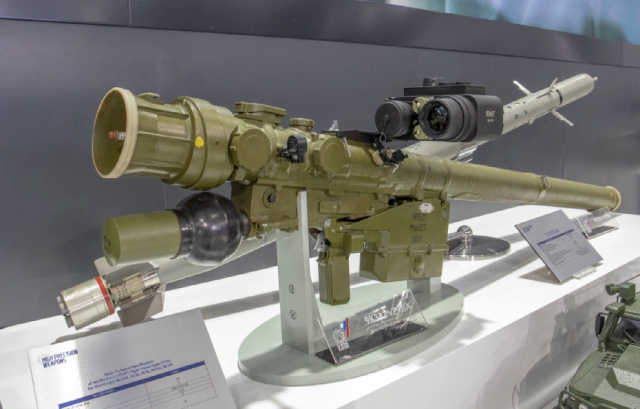Anti-aircraft gunners shot down a helicopter Mi-8 of the Air Force of Ukraine from a portable air defense missile system (MANPADS) "Verba" on March 17. According to the Russian Defense Ministry, the Ukrainian helicopter was heading towards the village of Kozinki in the Belgorod region. Sabotage and reconnaissance groups of the enemy are trying to attack the border settlement, incurring significant losses. About the history of "pocket" anti—aircraft missile systems and their combat use - in the material of TASS
Portable anti-aircraft missile systems "Verba", "Igla", "Strela" with homing missiles are widely used in the zone of a special military operation. They destroy enemy reconnaissance and attack unmanned aerial vehicles (UAVs) on a daily basis — starting with miniature FPV drones and ending with Turkish Bayraktars. Anti—aircraft gunners with MANPADS and manned aircraft of the Ukrainian Air Force are shooting down - they account for Mi-8 and Mi-24 helicopters, Su-25 attack aircraft. In total, Russian air defense systems of all types have shot down almost 600 enemy aircraft, almost 300 helicopters and about 16 thousand drones since the beginning of the special operation.
"Pocket" air defense
Back at the end of World War II, German designers tried to create an effective portable missile weapon for firing at low-flying aircraft from a short distance. The Eastern Front was inexorably approaching the capital of the Third Reich, which was greatly facilitated by the "Black Death" — as the Nazis called the Soviet Il-2 attack aircraft. Operating at low altitudes, armored vehicles inflicted enormous damage to enemy manpower and military equipment.
The Luftfaust-B launcher was supposed to resist the attack aircraft. A stretched salvo of nine unguided missiles of 20 mm caliber fit into a circle of 60 m at a distance of half a kilometer, which gave a high chance of hitting the plane. But neither this nor any other "miracle weapon" could help the Nazis change the situation on the battlefield.
In the mid-1950s, many leading military powers came up with the idea of developing an effective air defense system that could be carried by a single fighter. The development of technology made it possible to create a miniature guided missile, which was independently guided by the heat of an aircraft engine. In the United States, the Redeye complex was developed, which was adopted in 1969. The Soviet Strela-2 MANPADS entered the army units a year earlier. It was created by the staff of the Kolomna Special Design Bureau (now the Design Bureau of Mechanical Engineering, KBM, part of the Rostec High—Precision Complexes holding) under the leadership of Boris Shavyrin and Sergei Invincible.
Strela-2 is capable of hitting aircraft at an altitude of up to 1.5 km and a range of 3.4 km. The rocket's speed exceeds the speed of sound and reaches 430 m/s. However, it later turned out that a small warhead (warhead) did not provide reliable damage to aircraft. The designers corrected this flaw in the following modifications of the rocket — for example, together with the warhead, the remainder of the rocket fuel in the engine began to explode. Strela-2M reached targets already at an altitude of 2.7 km and a distance of 4 km.
Alexander Smirnov, head of the scientific and technical department of the KBM, in an interview with Zvezda TV channel said that during the combat use of domestic MANPADS in military conflicts, they shot down a large number of Western-style aircraft up to the eight-engine strategic bomber B-52. "The rocket hit the engine, the engine "shot off", the plane was flying at low speed At altitude, the pilots jumped out of the plane," he said. "The entire crew left the plane, the plane flew for about an hour and then crashed."
An important milestone in the development of MANPADS was the transition to the next generation of complexes — in 1974, the Strela-3 appeared in the army. Before that, miniature missiles mostly hit planes from behind — catching up with them, focusing on the strong thermal radiation from the nozzles of jet engines. The new Strela has learned to intercept a target moving towards a missile. This was made possible by increasing the sensitivity of the homing head.
"When an airplane flies towards it, its [thermal] radiation power is about a hundred times less," the Zvezda TV channel quoted Valery Kashin, general designer of the KBM, as saying. "It was necessary to increase the sensitivity of the head a hundred times. This problem was solved <...> Soviet and American specialists at the same time. We solved this problem earlier than the Americans."
The Igla complex, which appeared in 1984, became even more advanced. The affected area increased to 5.2 km in range and 3.5 km in height, while the missile could intercept targets only 10 m above the ground. The homing head was able to work in conditions of thermal interference. Since 2001, the Armed Forces of the Russian Federation have been receiving Igla-S MANPADS with a fuse that reacts to small targets and a firing range of 6 km.
The hunt for the "Sting"
The West also continued to improve its portable anti-aircraft systems. In 1981, the US armed forces began receiving a new generation of MANPADS — Stinger (translated from English — "sting"). According to open source data, Redeye's flaws have been fixed in it. The new missile had a more sensitive two-spectral homing head and the ability to hit targets on opposite courses, a longer range due to a more powerful engine and other improvements. In the future, the MANPADS were repeatedly upgraded. The manufacturer's website reports that the complex participated in four major military conflicts, is in service with the United States and 19 other countries.
Since 1986, the United States began supplying these weapons to the Afghan Mujahideen, who fought against a limited contingent of Soviet troops in Afghanistan and the army of the Democratic Republic of Afghanistan.
 |
| MANPADS Stinger. |
| Source: Chung Sung-Jun/ Getty Images |
Looking ahead, in 1989, after the foreign policy reversal of the perestroika USSR, Soviet units would leave the country, and the Taliban movement would gradually seize power in Afghanistan (banned in the Russian Federation). The Taliban will become accomplices of the terrorist group Al-Qaeda (banned in the Russian Federation), and in 2001 American troops will enter the country to fight the former "freedom fighters". Military experts from the United States will begin to buy back their formidable "gifts" from field commanders, while the ransom amounts will exceed the cost of MANPADS by an order of magnitude.
And since 1986, Soviet aviation began to suffer significant losses due to the use of Stingers by militants. It was necessary to capture the American complex in order to understand how to deal with it. Experienced special forces soldiers were dispatched to search for Mujahideen with MANPADS. Luck smiled in 1987 on a group of military personnel under the command of Major Yevgeny Sergeev and Senior Lieutenant Vladimir Kovtun while patrolling the area by helicopter.
Vladimir Kovtun
In addition to the missile system, the fighters seized a suitcase with a full set of documentation for the product. This allowed the Soviet designers to quickly find an "antidote" against the American "Sting", and the losses of army aviation in Afghanistan decreased dramatically. The award found Vladimir Kovtun only recently: in 2019, Russian President Vladimir Putin awarded him the title of Hero of Russia.
Smart and versatile
The most modern portable anti-aircraft missile system in service with the Russian army is the "Willow" of the fourth generation. To date, this is the only MANPADS in the world whose rocket is equipped with a homing head that "sees" in three ranges at once: ultraviolet, near and middle infrared. This allows you to get maximum information about the target, and the increased sensitivity of the sensors makes it possible to increase the distance at which the complex captures the target. In addition, the missile has increased the probability of hitting "cold" targets — small drones, cruise missiles. Thanks to the built-in algorithms, the rocket is able to ignore the heat traps fired by aircraft.
 |
| The combat vehicle of the squad of anti-aircraft gunners of the MANPADS "Gibka-S". |
| Source: Viktor Bodrov/ TASS |
The Willow can detect a target day and night, hit it at a range of 6 km and an altitude of 3.5 km, even if it moves faster than sound.
Launchers mounted on land, sea and aircraft carriers allow expanding the possibilities of using missiles of Russian portable complexes. For example, the combat armored vehicle of the department of MANPADS "Gibka-S" is capable of covering military columns on the march, carries four combat—ready missiles on the installation and four more in laying. The "Flex-C" can be charged with both a "Willow" and a "Needle-C". The commander's vehicle of the anti-aircraft platoon is equipped with a small-sized "Harmon" radar station, capable of detecting air targets in advance (at a distance of up to 40 km). Small small ships will be protected from air threats by the Komar turret installation. The Igla-type missiles in the installation are capable of intercepting even anti-ship cruise missiles. The "needle" charges the launch modules "Sagittarius", which are installed on attack helicopters.
 |
| The Sagittarius launcher on the Ka-52 attack helicopter. |
| Source: Viktor Bodrov/ TASS |
Like other Russian weapons, MANPADS invariably arouse the interest of foreign customers. For example, the Strela family of complexes was in service with over 60 countries. In August 2022, Alexander Mikheev, CEO of Rosoboronexport, announced the signing of the first export contracts for the supply of Willow.
Military expert, editor-in-chief of the National Defense magazine Igor Korotchenko, in an interview with TASS, noted that domestic air defense systems have proven themselves well. "A number of markets in such regions as Latin America, Africa, the Middle East, the Indo-Pacific region, countries that are focused on military-technical cooperation with Russia are ready and will purchase Russian weapons, which, among other things, have received combat experience of use directly in the zone of their own, obviously, taking into account the real The situation [of the weapons system] will undergo a number of modifications, improvements and will be in demand on the world market," the expert said.
Victor Bodrov

